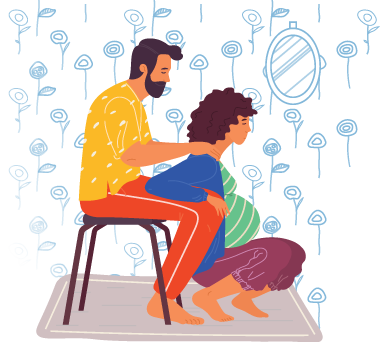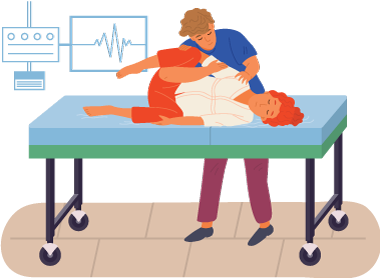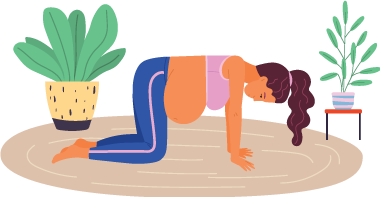Birthing positions
For nine months you prep and plan for baby’s arrival. You read books, watch videos and maybe even take a birthing classes. There are actually a variety of labor positions you can assume during the first phases of childbirth and a whole other set that makes for good birthing positions when it’s time to push—and they don’t all call for you to be flat on your back
1. Squat Position
Squats rarely top anyone’s list of favorite exercises, but on the day you give birth, you may want to give them a try as one of your labor positions. Squatting can be done against a wall or with the support of a chair or partner for your back. Legs wider than shoulders, bent, back straight (loins pressed to the wall). Use diaphragmatic breathing.
Pros:
Helps open the pelvis
Gives baby room to maneuver as they head toward the birth canal
May become tiring


2. On Fitball
An exercise or fitball for pregnant women help not only in the process of gestation, but also prepare the body for childbirth. Besides sitting on a birthing chair or toilet, you can also work the birthing ball into your labor positions. There are more than a few women who hail the prop as their BFF during labor and delivery. Birthing balls provide support while you shift around. In addition will help the body of mommy after child birth. Check beforehand to see if your hospital uses wireless fetal monitors; if not, you’ll be limited in how far you can move in these labor positions.
Pros:
3. Lying on your side
Lying on your side is one of the best labor positions to try when you need a rest.Helps to correct the insertion of the head into the birth canal reducing the likelihood of injury to the baby.

4. Water Genera
This method is used to reduce pain and increase the level of comfort during childbirth, mitigate birth stress in newborn caused by sudden drop in temperature, gravity, light and sound effects.
You may qualify for water immersion if:
Your baby doesn’t need constant monitoring during labor. We can’t use continuous monitoring – either external or internal – in the water.
You’ve reached a gestational age of at least 37 weeks. Women in preterm labor do not qualify because their babies need to be monitored continuously, and preterm deliveries tend to be rapid. We absolutely do not want these babies born in the tub accidentally.
You may not qualify for water immersion if:
You have an epidural in place or if you have had any medications that are sedating.
You have a bloodborne infection like hepatitis or HIV. In that case, getting into the water may increase the risk of exposing your baby or health care team to the infection.
You have any medical or obstetric complications.


5. On All Fours
The all fours position calls for you to get down onto your hands and knees, either in bed or on a floor mat. The hands and knees position is a great one, since it helps open the pelvis.
Sway back on forth - image yourself on a big ball. Use diaphragmatic breathing.
6. Kneel on a prop | 7. Lean on a prop | 8. Lean on a prop |
|---|---|---|
|
|
|



